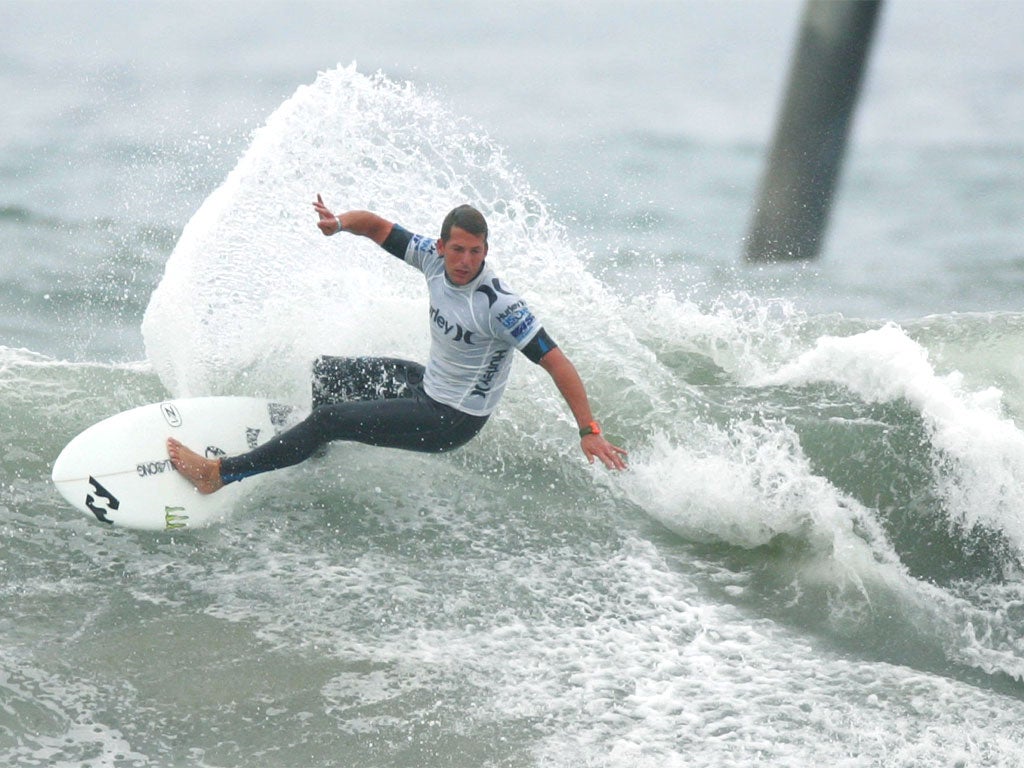Surfing: Rolling waves not joints as drug testers move in
ASP attempts to clean up sport's image to keep sponsors happy by bringing in random tests

"We know you're carrying, sir," said the drugs inspection officer, at a far-flung airport. "Just tell us where it is." In truth, the only thing I was carrying was a surfboard. But until now it was a reasonable assumption that carrying one implied carrying the other. No longer.
The Association of Surfing Professionals (ASP) has announced that it will be bringing in random drugs testing from 2012. The inspectors will be looking for both recreational and performance-enhancing drugs. If past history is anything to go by, they won't have to look very hard.
The new policy is the result of pressure from commercial sponsors, who want to be able to sell a clean image. Surfing has been living a double life for the past few decades. Professional surfing began to take off in the 1970s and 1980s. The ASP was modelled on the ATP. But surfers and tennis players – surfers and non-surfers generally – were still worlds apart.
On the one hand, the pro circuit was trying to look as straight and glossy and law-abiding as possible. On the other, surfing remained marginal, subversive, a perfect fit with the counter-culture. Surfers were natural rebels, with or without a cause. Drugs were an integral part of the scene.
One 1970s surfboard, "the Meth Model", had the slogan "For Those Who Like Speed".
But when surfers turned pro drugs became a well-known secret. I have now written two books about surfing and innumerable articles and I have invariably been leant on to omit the drugs or translate the substance abuse into alcohol. Lawyers are quick to talk about "defamation".
In Hawaii, I have often felt like some kind of maiden aunt because I don't take drugs. I once let some passing dude into the house to use the phone. "Thanks, bro," he said on his way out. "Take this." And he took off his backpack and pulled out a cannabis bud about the size of a small cauliflower. It was a form of currency. Some surfers made a modest living out of it. Then the big boys came in – the drugs barons – and took over. And the drugs scene got progressively scarier – acid, coke, crack, heroin.
I should stress that not everyone was into drugs. Ken Bradshaw, the big-wave legend, for one, was a great proponent of smoothies and ginseng. But I've heard more than one serious surfer maintain that smoking marijuana enhances your surfing on the grounds that all that inhalation increases your lung capacity.
Perhaps the main reason behind the prevalence of drug-taking in surfing is the sheer intensity of the experience. The main practical problem is not how to surf a gnarly tubing wave at Pipeline or a 60-footer at Jaws, but how to adjust to being on Planet Earth the rest of the time. Surfing releases powerful chemicals. There is a natural temptation to seek the artificially induced high back on dry land.
Many surfers have died of drug-related causes. But it was probably the death of Hawaiian Andy Irons last year that concentrated minds. Irons was a three-time ASP world champion and, at one point, that only man who could challenge the dominance of Kelly Slater. But he was also famous for being stoned. He died ingloriously in a hotel room in Texas with a lethal cocktail of drugs in his system.
I suspect that the James Dean mentality – die young and be a good-looking corpse – will survive. But the grand old tradition of psychedelic self-harm is officially over. Symbolically, surfing may lose some of its outlaw allure. But maybe in the future I'll even be able to get through the airport without having the sniffer dogs pounce on me.
Subscribe to Independent Premium to bookmark this article
Want to bookmark your favourite articles and stories to read or reference later? Start your Independent Premium subscription today.

Join our commenting forum
Join thought-provoking conversations, follow other Independent readers and see their replies